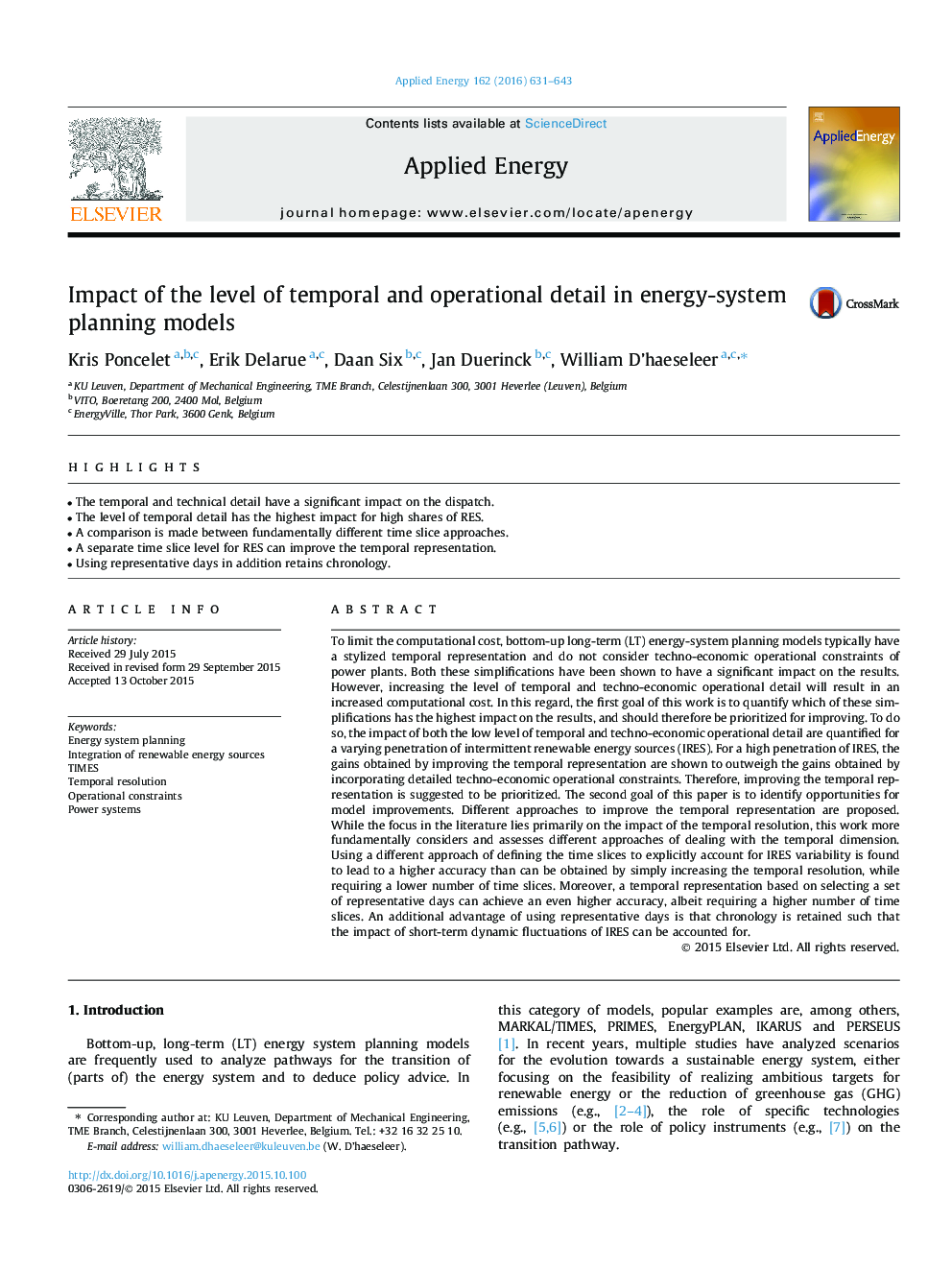| کد مقاله | کد نشریه | سال انتشار | مقاله انگلیسی | نسخه تمام متن |
|---|---|---|---|---|
| 6684773 | 501865 | 2016 | 13 صفحه PDF | دانلود رایگان |
عنوان انگلیسی مقاله ISI
Impact of the level of temporal and operational detail in energy-system planning models
ترجمه فارسی عنوان
تاثیر سطح جزئیات زمانی و عملیاتی در مدل های برنامه ریزی انرژی سیستم
دانلود مقاله + سفارش ترجمه
دانلود مقاله ISI انگلیسی
رایگان برای ایرانیان
کلمات کلیدی
برنامه ریزی سیستم انرژی، ادغام منابع انرژی تجدید پذیر، بار، قطعنامه زمانی، محدودیت های عملیاتی، سیستم های قدرت،
موضوعات مرتبط
مهندسی و علوم پایه
مهندسی انرژی
مهندسی انرژی و فناوری های برق
چکیده انگلیسی
To limit the computational cost, bottom-up long-term (LT) energy-system planning models typically have a stylized temporal representation and do not consider techno-economic operational constraints of power plants. Both these simplifications have been shown to have a significant impact on the results. However, increasing the level of temporal and techno-economic operational detail will result in an increased computational cost. In this regard, the first goal of this work is to quantify which of these simplifications has the highest impact on the results, and should therefore be prioritized for improving. To do so, the impact of both the low level of temporal and techno-economic operational detail are quantified for a varying penetration of intermittent renewable energy sources (IRES). For a high penetration of IRES, the gains obtained by improving the temporal representation are shown to outweigh the gains obtained by incorporating detailed techno-economic operational constraints. Therefore, improving the temporal representation is suggested to be prioritized. The second goal of this paper is to identify opportunities for model improvements. Different approaches to improve the temporal representation are proposed. While the focus in the literature lies primarily on the impact of the temporal resolution, this work more fundamentally considers and assesses different approaches of dealing with the temporal dimension. Using a different approach of defining the time slices to explicitly account for IRES variability is found to lead to a higher accuracy than can be obtained by simply increasing the temporal resolution, while requiring a lower number of time slices. Moreover, a temporal representation based on selecting a set of representative days can achieve an even higher accuracy, albeit requiring a higher number of time slices. An additional advantage of using representative days is that chronology is retained such that the impact of short-term dynamic fluctuations of IRES can be accounted for.
ناشر
Database: Elsevier - ScienceDirect (ساینس دایرکت)
Journal: Applied Energy - Volume 162, 15 January 2016, Pages 631-643
Journal: Applied Energy - Volume 162, 15 January 2016, Pages 631-643
نویسندگان
Kris Poncelet, Erik Delarue, Daan Six, Jan Duerinck, William D'haeseleer,
